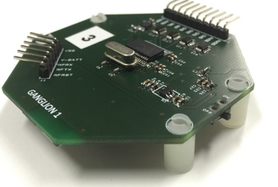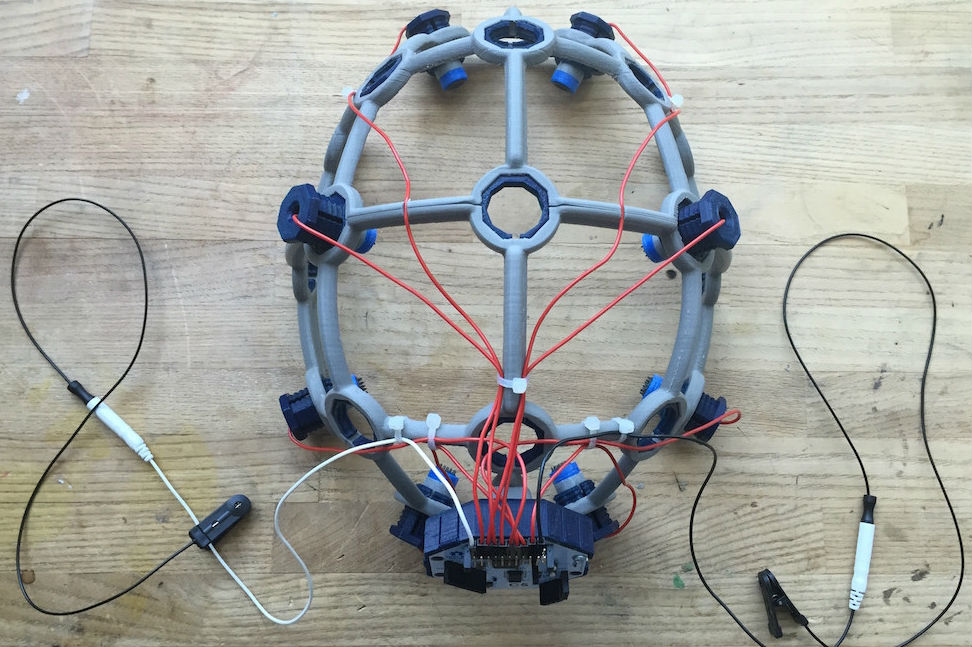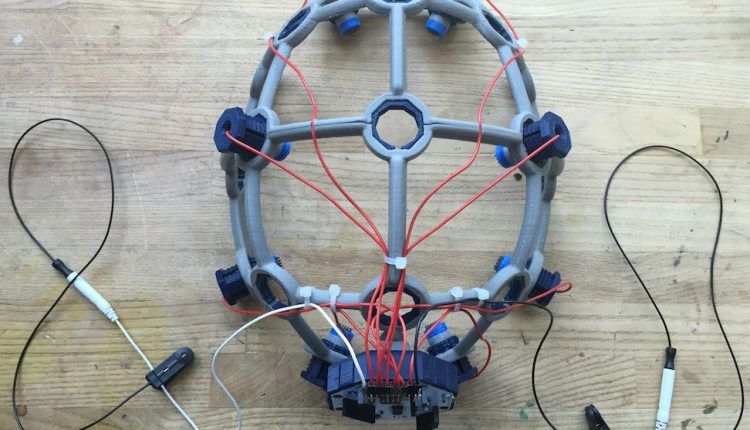Open-source, 3D-printed headset makes biosensing tech available to hobbyists
OpenBCI, an open-source platform of hardware and software tools for measuring and analyzing the human body’s electrical signals, has just released two new products that bring bio-sensing technology to novices and beginners — so you no longer have to be an engineer or professional to tinker with neuroscience and biosensing.
The OpenBCI system can measure brain data (EEG), muscle data (EMG), heart activity (ECG), among other features.
The OpenBCI Ganglion
The first product OpenBCI is offering to anyone interested is the Ganglion, a bio-sensing device that you can purchase for $99 on the company’s Kickstarter campaign website.

On the input side of the device, there are 4 high-impedance differential inputs, a driven ground (DRL), a positive voltage supply (Vdd), and a negative voltage supply (Vss). The inputs can be used as individual differential inputs for measuring EMG or ECG, or they can be individually connected to a reference electrode for measuring EEG.
The company uses Simblee, an Arduino-compatible radio module, as an on-board microcontroller and wireless connection. OpenBCI opted to use Simblee because it says the module is smaller, cheaper, and more robust than the RFDuino, which was used in a previous product they released, the OpenBCI 32bit Boards and USB Dongles.
Simblee provides user programmable flash, 29 GPIO pins, and the ability to update software over the air (OTA). Each Ganglion will be pre-programmed with firmware so you can get started sensing your body right out of the box.
The company will also offer up to 20 of the GPIOs to hack with.
The Ultracortex Mark IV
Two years ago the company developed , the 3D-printable EEG headset concept which evolved into another four versions. Currently the Ultracortex Mark III Kit is available for sale, but OpenBCI has come up with yet another version that is in the conceptual phase and derives from the other versions: The Ultracortex Mark IV.

The helmet uses dry electrodes and dry sensors to reduce set-up time and makes wearing the headset more pleasant (no need for conductive gels). The makers also developed a system for adjusting pressure on the scalp using an “integer screw” that twists and locks in place to set a fixed distance between the electrode holder and your scalp and a low-rate spring that acts as a pressure relief. This allows for easy adjustment for different head sizes.
The Ultracortex Mark IV is available for $450 on the company’s Kickstarter campaign page and includes includes all Ultracortex Mark IV parts, a Ganglion Board, and is compatible with the OpenBCI 32bit Board.
Both products are completely open-source so hobbyists, hackers, and DIYers have full access to the information received from the electrodes and can begin measuring their own bodies right away.


Comments are closed, but trackbacks and pingbacks are open.